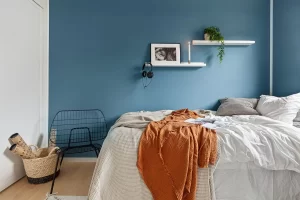Tips For Creating a Moss Garden

Before you start your project, you should know about some important tips to keep in mind. Moss requires moisture and shade to grow. Over-watering will stunt the growth of your moss garden. Excess dryness will also cause it to turn brown. To avoid this, you should place your moss garden in a part-sun location, as it will receive sufficient light without scorching.
One of the most common questions that moss growers ask is what type of container is best for their plants. While mosses have no roots, they are still capable of conduction. They transfer dissolved particles to the soil through direct contact. Mosses are sensitive to chemicals and heavy metals. Make sure that you keep your moss garden away from such substances. It’s best to use a moist but not too damp container for the best results.
After creating a pocket in the soil, you can plant orchids or trees. Then, fill the pocket with the soil that has the proper mix. Moss gardens are best made in containers because you can change the design anytime you wish. After planting your plants, you can water them with a fine mist to encourage growth. If you decide to plant trees or other vascular plants, make sure to prepare the soil before planting your moss garden.
Before planting your mosses, you must observe the mosses in their natural habitat. Because they have no true roots, they grow on rocks, logs, concrete planters, and clay planters. They attach themselves to these surfaces with structures called rhizoids. Mosses are an important part of ecosystems. They can replace grass and make your yard look more lush. It also looks much better than grass.
For best results, plant your moss seeds in the early spring or fall, after the soil has cooled off. If you have a shady area, it’s best to plant your moss bed during this time. Mosses do best in soil that is moist and has a neutral pH level. Make sure to weed and trim back bushes, but don’t forget to water your moss.
As a general rule, moss grows best in shaded or sunny areas. Moss doesn’t derive nutrients from soil, so you’ll need to be sure your moss garden is in an area with a stable base. Loose gravel or sand is not the right base for moss because it’s not as stable. In addition, you should also make sure that your moss garden doesn’t get damaged by squirrels.
After you’ve selected the spot where you’re going to plant your moss, prepare the soil. Make sure that the soil is 5.5 degrees Fahrenheit, as this is the perfect temperature for moss growth. You can purchase moss transplants from garden stores or from online sources. You can then transplant your moss to the new spot. Alternatively, you can use the moss as a lawn cover or edging. Make sure that you have prepared the soil by raking it with a pitchfork to ensure that the filaments make good contact with the ground.


